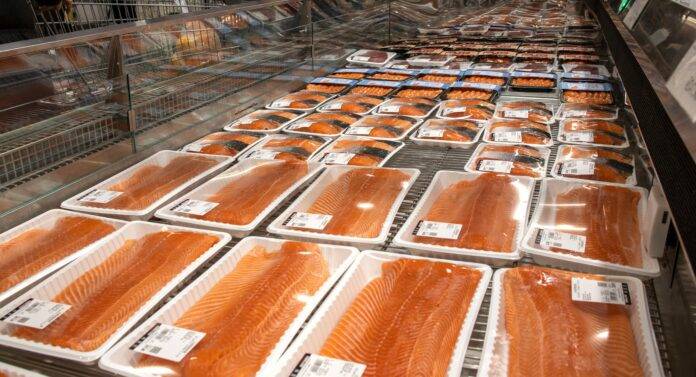Overview of Chinese Salmon Prices Post Spring Festival
During the week of February 10-16, 2025, Chinese salmon prices experienced modest increases. This trend follows the country’s Spring Festival holiday, during which there was a notable adjustment in purchasing behavior among dealers. According to industry sources from Undercurrent News, the changes in demand and prices reflect broader market dynamics and seasonal influences that characterize the seafood industry.
Market Fluctuations
In the seafood market, prices are often subject to fluctuation based on seasonal events, consumer behavior, and supply chain factors. The Spring Festival, a significant cultural event in China, typically leads to increased consumer spending and heightened demand for various food items, including seafood. However, following the festivities, a common pattern emerges where dealers tend to scale back their purchases as the market stabilizes and consumer demand normalizes.
The modest gain in salmon prices during this particular week can be attributed to several factors. Firstly, the aftermath of the Spring Festival often sees a temporary surge in demand as consumers look to indulge in festive meals. This can lead to increased prices as suppliers respond to heightened demand. However, as the celebrations conclude, a more cautious approach among dealers is observed, which can counterbalance any immediate price increases.
Implications for Dealers
For dealers in the seafood market, understanding these seasonal trends is crucial for strategic purchasing and inventory management. The post-festival period can present challenges, as dealers must navigate the transition from a peak in demand to a more subdued market. This requires careful analysis of market signals and consumer behavior to avoid overstocking or understocking products.
Moreover, the modest price increases also indicate a potential for profitability in the weeks following the Spring Festival. Dealers who strategically manage their inventories and anticipate market movements may find opportunities to capitalize on these price fluctuations. As the market stabilizes, those with foresight can position themselves advantageously for the upcoming weeks.
Broader Market Context
The recent shifts in Chinese salmon prices also reflect broader trends within the global seafood market. China is one of the largest consumers and importers of seafood, and its market dynamics can have significant implications for global prices and supply chains. As consumer preferences evolve and sustainability becomes a more pressing concern, the seafood industry is undergoing transformations that impact pricing and availability.
In addition to seasonal influences, external factors such as international trade policies, environmental regulations, and supply chain disruptions can also play a role in shaping the market. Dealers must remain vigilant and informed about these broader trends to navigate the complexities of the seafood market effectively.
Conclusion
In summary, the modest gains observed in Chinese salmon prices during the week of February 10-16, 2025, can be attributed to the seasonal impact of the Spring Festival and the subsequent adjustments in dealer purchasing behavior. As the market continues to evolve, it will be essential for dealers and stakeholders in the seafood industry to remain adaptive and responsive to changing consumer demands and external market influences. The ability to anticipate and react to these trends will be key in maximizing profitability and ensuring sustainable practices in the evolving landscape of the seafood market.
For those looking to stay updated on the latest trends and developments in the seafood industry, accessing comprehensive articles and insights can provide valuable information. By subscribing to industry news platforms, stakeholders can gain access to critical data and analysis that will inform their decision-making and strategic planning in the dynamic seafood market.




